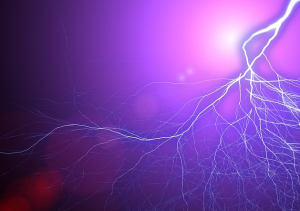 Static electricity removal strategies should be of highest importance to plant-based engineers. It has been established that static forms of electricity are considered to be the most insidious when it comes to fire sources and explosions that are experienced in the industrial setting. By nature, static electricity is unpredictable, which makes it terribly difficult for plant-based engineers to detect. As a result, it is uncontrolled. This makes it a tremendous problem in the manufacturing industry; however, the biggest concern rests in industrial-based operations where materials that are both sensitive and flammable are located. Unfortunately, many of the fires and the explosions that happen within plants could probably be attributed to product purity and the processing speeds associated with production. By approaching electrostatic ignition issues with a program that identifies and controls the hazards, fewer complications, injuries, and financial losses would be incurred by industrial plants around the nation.
Static electricity removal strategies should be of highest importance to plant-based engineers. It has been established that static forms of electricity are considered to be the most insidious when it comes to fire sources and explosions that are experienced in the industrial setting. By nature, static electricity is unpredictable, which makes it terribly difficult for plant-based engineers to detect. As a result, it is uncontrolled. This makes it a tremendous problem in the manufacturing industry; however, the biggest concern rests in industrial-based operations where materials that are both sensitive and flammable are located. Unfortunately, many of the fires and the explosions that happen within plants could probably be attributed to product purity and the processing speeds associated with production. By approaching electrostatic ignition issues with a program that identifies and controls the hazards, fewer complications, injuries, and financial losses would be incurred by industrial plants around the nation.
Is Your Plant Susceptible to Electrostatic Ignition Hazards?
In order to determine if you should continue reading this guide, you must first determine if your industrial plant is susceptible to electrostatic ignition hazards. In other words, could a fire or explosion occur in your plant as a result of static electricity? In order to determine this, ask yourself if the following conditions are present in your plant:
- The Atmosphere is Extremely Sensitive and Flammable
- The Plant Generates Some Degree of Electrostatic Charge
- Electrostatic Charge is Known to Accumulate in the Plant
- There is Electrostatic Discharge
- There is a Sufficient Level of Discharge Energy Present Throughout the Plant
Ignition Hazard Confirmed
Now that you know the conditions that must be present in order for your plant to be considered in hazard of a potential fire or explosion pertaining to static electricity, you may quit reading if these conditions do not apply to you; however, if they do apply, you must incorporate a hazard plan – immediately. The following measures may be taken if you have confirmed that your industrial plant is considered to be an ignition hazard:
- First, you must realize that static electricity is formed with fast and energetic movements, as well as repeated contact and separation of the various surfaces within your plant. In order to succeed in static electricity removal, you should slow down the productivity rate and/or processing speed within your industrial plant.
- If liquids are processed or passed within your plant, you should understand that the liquids are conductive, electrically-speaking. At all costs, non-polar liquids should not be used because of the fact that they have a high level of charge generation and could result in the development of sparks that could lead to fires and explosions.
- You should enlist the assistance of a professional electrical company to come in and determine the static electricity rate within your plant. If it is found to be high, the electrician will be able to provide you with numerous types of static electricity removal by simply looking at the sources of the charges.
Conclusion
Static electricity has the potential to be very challenging to plant-based engineers. A charge created by static electricity is specifically generated by the various means highlighted in this article. The charge may dissipate or it may accumulate. It all depends on the overall level of conductivity associated with the materials that is generating the static electricity. Not only can these charges result in fires, but, they could result in injuries and loss of productivity. For more information on static electricity removal, contact Hardcore Electric today by calling: 720-841-3897
